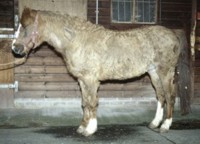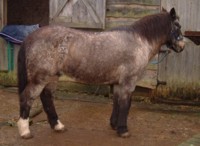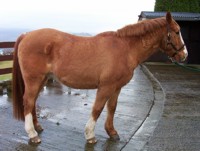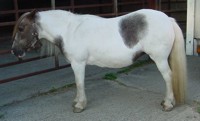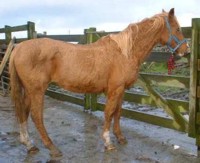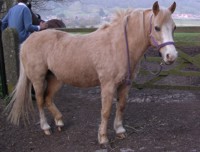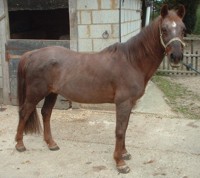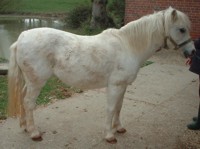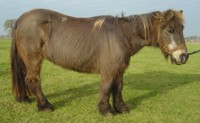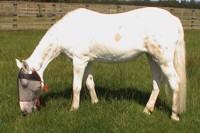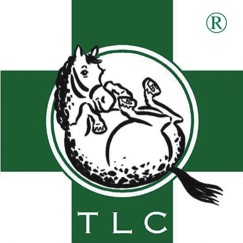 |
The Laminitis
Clinic
|
|
Equine
Cushing's Disease (ECD)
Harvey Cushing in 1932 described a fatal syndrome in humans characterised by unusual disposition of fat depots, osteoporosis, immune suppression, generalised weakness which was associated with basophilic adenoma of the pituitary gland. This syndrome we now know to be due to elevated concentrations of circulating cortisol of adrenal origin and hyperadrenocorticism has become known as Cushing's disease. In the horse Cushing's disease is always secondary to a pituitary adenoma or hyperplasia; pituitary dependent Cushing's disease. ECD usually manifests itself from late summer throughout winter. This may result in laminitis during this period. This is the time of year when the day length is shortening. It is my view that ECD is due to a dysfunction in the pineal gland, the ancient "third eye" responsible for the recognition of light and dark periods. The pineal gland influences the pituitary gland via the hypothalamus. In horses there may be insufficient dopamine being released from the hypothalamus. Dopamine inhibits the pars intermedia of the pituitary gland. Therefore when there is less dopamine there is less inhibition of the pars intermedia which then increases in size. However there is a close interaction between melatonin, serotonin and dopamine and the balance of these three hormones/signalling molecules may be important in the pathogenesis of ECD. Clinical Signs To the trained observer, these cases can be diagnosed on clinical appearance and history alone. All the horses and ponies on the right are suffering from ECD. The clinical signs include; Failure to shed their coat
in Spring, the coat becomes long, thick and matted. Diagnostic Testing With the plethora of tests
used to confirm hypercorticism, which ones are safe for the laminitic and give
most information relating to both Cushing's disease and Metabolic Syndrome? Whilst a Thyroid Releasing Hormone response test is safe, it is only of value if the horse shows a baseline cortisol concentration within the normal range. Additionally, this test provides too many equivocal results to be reliable as a ECD test and again is non diagnostic for Metabolic Syndrome. A combined dexamethasone suppression / TRH response test has the disadvantages noted for both tests above. The test I use these days is a measurement of endogenous ACTH, cortisol, insulin and glucose. The test is safe for the laminitic, involves one blood sample and is relatively inexpensive. The test should ideally be performed first thing in the morning after the horse has been stabled overnight with no food provided. It is inadvisable to use any of the above tests if the horse is currently suffering from laminitis, the stress of which is likely to cause erroneous results. The presence of plasma endogenous ACTH concentrations greater than 70 pg/ml, elevated serum cortisol, insulin and glucose concentrations is diagnostic of ECD. Cases with normal endogenous ACTH concentrations (< 40 pg/ml) but with elevated serum insulin, cortisol and glucose concentrations are diagnostic of of insulin resistance and Metabolic Syndrome. Dietary options - ECD Veterinary surgeons tend
to use the following types of product; 2. those which inhibit the production of cortisol e.g. trilostane and aminoglutethimide. 3. specific herbal extracts. 4. Light therapy. The use of artificial light of the correct wavelength and luminesence to increase the day length. Prascend (Pergolide 1mg pink tablets) The drug is expensive so if you use it make sure the horse eats it ! The surest way is to feed it from the hand either in a titbit or a sandwich. Potential adverse reactions in horses include inappetance, transient anorexia and lethargy, mild central nervous system signs (e.g. mild depression and mild ataxia), diarrhoea and colic! Dosage 2 microgrammes per kg bodyweight daily as a continuing treatment. This drug is much more expensive than Periactin but seems a little more reliable in achieving a positive response. Melatonin Periactin.
Trilostane (Vetoryl) Specific herbal extracts
|

